The 7 Must-Try Foods in Finland – A Foodie Travel Guide from the experts at Cerca Travel.
Discover the must-try foods of Finland with insider tips from local experts. From fish pies to Karelian pasties, explore sustainable and regenerative food experiences across the country.
Finland’s food scene is an underrated gem that blends Nordic purity with deep-rooted traditions. As a team of travelers who’ve eaten our way across the globe, we’re always on the hunt for real-deal local flavors. In Finland, that means talking to Finnish experts—chefs, grandmothers, and street vendors—who know what’s up.
Whether you’re in Helsinki or the Arctic Circle, these seven must-eat Finnish foods will give you a taste of the country’s heart and soul. And because responsible travel is key we always keep an eye out for sustainable and regenerative ways to experience these tastes.

1. Karjalanpiirakka (Karelian Pasties)
Karjalanpiirakka hails from Karelia, a region split between Finland and Russia. These hand-sized pasties, traditionally filled with rice porridge and wrapped in a thin rye crust (see the importance of rye further down this list, were once wartime staples but are now a national favorite. Typically served with egg butter (munavoi – hard boiled eggs mashed with butter), they’re perfect for breakfast or a quick snack.
The origins of Karjalanpiirakka date back centuries to the time when the Karelian people relied on simple, locally available ingredients to sustain themselves through long, harsh winters. The earliest versions were likely filled with barley or mashed potatoes before rice became a popular filling option with increased trade.
Karjalanpiirakka played an essential role in Finnish food culture, especially during World War II when evacuees from Karelia spread their culinary traditions across the country. Today, this beloved dish is protected under the European Union’s Traditional Specialty Guaranteed (TSG) designation, ensuring that authentic versions remain true to their origins.
Where to Try It
Ekberg Café (Helsinki) – Finland’s oldest café, serving classic Karjalanpiirakka.
Kauppahalli (Turku) – A traditional market hall offering freshly baked pasties.
Hands-On Experience
Perinneleipurit Bakery in Tampere offers workshops where you can learn to make authentic Karelian pasties.

2. Kalakukko (Fish Rye Pie)
Kalakukko is a rustic dish from the Savo region, traditionally made by wrapping whole fish (usually perch or vendace) and pork or bacon, baked for hours inside a dense rye bread crust. Once a meal for fishermen and farmers, today it’s a comfort food that embodies Finland’s love for hearty, simple flavors.
Over time, different variations have emerged, with some recipes including additional seasonings or alternative fillings such as salmon. The dish remains an important symbol of Finnish heritage.
Where to Try It
Muikkuravintola Sampo (Kuopio) – A great spot for traditional Finnish dishes.
Hands-On Experience
Visit the Kuopio Market Hall for a chance to see bakers preparing Kalakukko using traditional methods.

3. Poronkäristys (Sautéed Reindeer)
Poronkäristys (sautéed reindeer) has a long history deeply intertwined with the Sámi people, the Indigenous inhabitants of northern Scandinavia, including Finnish Lapland. For centuries, the Sámi have relied on reindeer herding as a way of life, using the animals for food, clothing, and transportation. The practice of herding reindeer dates back over a thousand years, making it one of the oldest forms of sustainable agriculture in the Arctic.
The origins of Poronkäristys as a dish come from a necessity to prepare hearty, energy-rich meals that could sustain people through the long, harsh winters of the far north. Traditionally, reindeer meat was slow-cooked over an open fire in a cast-iron pan or pot, with only a few simple ingredients—usually just salt and water—to preserve the natural, gamey flavor of the meat. Over time, the dish evolved to include sliced or shredded reindeer meat sautéed in butter or lard, often with onions and beer to add depth to the flavor.
During Finland’s rapid modernization in the 19th and 20th centuries, Poronkäristys spread beyond its Sámi origins and became a staple of Finnish cuisine. Today, it is commonly served throughout the country, especially in Lapland, where it remains a symbol of northern heritage. The dish is typically accompanied by mashed potatoes and tart lingonberries, which balance the rich, savory flavors of the meat with their natural acidity.
Sustainable reindeer herding is still an essential part of Lapland’s economy and culture, with herders maintaining traditional knowledge of animal migration, land management, and environmental conservation. Because reindeer are semi-domesticated and roam freely in the Arctic wilderness, their meat is considered one of the most sustainable and ethically sourced meats in Finland.a sustainable practice in Finland’s north for centuries.
Where to Try It
Nili Restaurant (Rovaniemi) – Locally sourced reindeer, cooked in traditional style.
Hands-On Experience
Stay at a Sámi reindeer farm where you can learn about sustainable herding and earn a reindeer driving license (yes, that’s a real thing).

4. Lohikeitto (Salmon Soup)
Lohikeitto is a staple of Finnish cuisine and represents the country’s strong connection to its lakes, rivers, and the Baltic Sea. For centuries, fish has been a fundamental part of the Finnish diet, particularly in coastal regions and among fishing communities. Lohikeitto, with its simple yet nourishing ingredients, is a prime example of Finnish comfort food, especially during the cold winters.
The creamy broth, often enriched with butter and milk, reflects Finland’s dairy traditions, while the use of dill highlights the influence of Scandinavian flavors. The dish is often served at family gatherings and traditional events, symbolizing warmth, hospitality, and the Finnish value of using fresh, locally sourced ingredients.lohikeitto is the ultimate comfort food, especially during harsh winters.
Where to Try It
Story (Helsinki) – Famous for its rich, fresh lohikeitto.
Hands-On Experience
Hakaniemi Market Hall calls itself the most authentic food hall in Finland, and certainly you can find almost all the traditional foods on this list there – but also, so much more, from crafts to textiles to produce. Check out Soup And More, a market vendor specializing in soup, on Monday, Wednesday and Saturday they feature Lohikeitto.
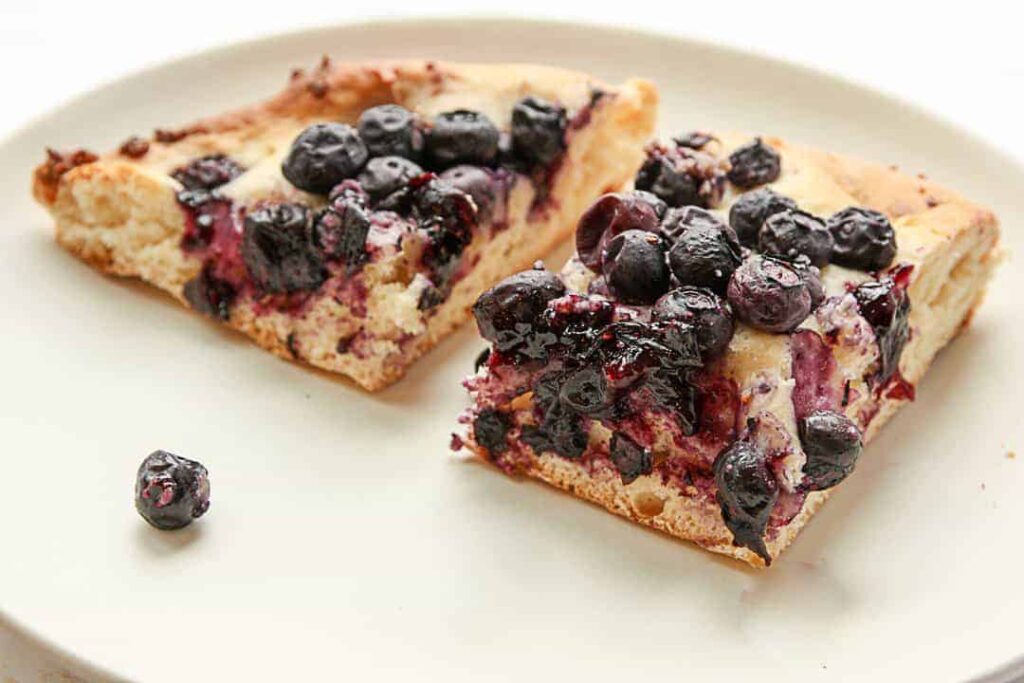
5. Mustikkapiirakka (Bilberry Pie)
Mustikkapiirakka is a beloved Finnish dessert made with wild bilberries, which grow abundantly in the country’s vast forests. Unlike cultivated blueberries, bilberries are smaller, darker, and pack a more intense flavor. The tradition of picking bilberries is deeply rooted in Finnish culture, with foraging considered a national pastime and an integral part of the Finnish right to roam (“jokamiehenoikeus”).
Finnish families often bake mustikkapiirakka in the summer when the bilberries are at their peak. The pie typically consists of a buttery crust filled with fresh or slightly sweetened bilberries and is commonly topped with vanilla sauce or custard. It’s a dessert that symbolizes Finnish summers, family gatherings, and the appreciation of nature’s bounty.like dessert is a summer favorite, especially when topped with vanilla sauce.
Where to Try It
Kakkugalleria (Helsinki) – A paradise for Finnish baked goods. Blueberry tarts, yes, and also raspberry topped cheesecakes, apple pies, and deep chocolate cakes.
Hands-On Experience
Nuuksio National Park foraging is free and popular in Finland – pick your own berries and mushrooms in the forests and national parks. Parks usually have maps and rangers who can help point you in the right direction.
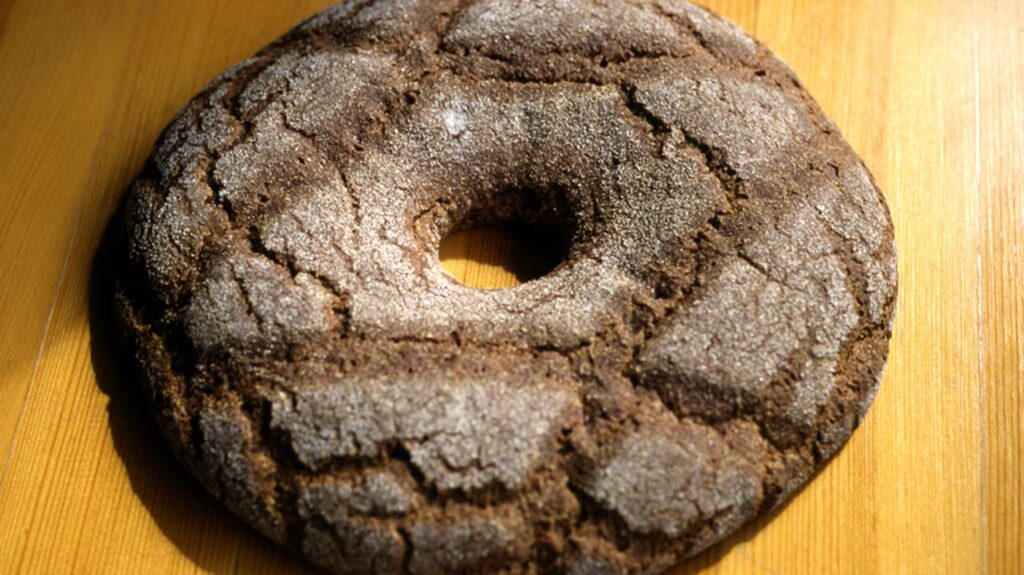
6. Ruisleipä (Rye Bread)
Finns eat more rye bread per capita than anyone else. Ruisleipä is dark, dense, and slightly sour—often baked with a starter that’s been kept alive for generations.
Ruisreikäleipä is a traditional rye bread, made with 100% rye flour. The name literally translates to “rye hole bread. And was baked and stored on a wooden rod.
Rye is a hardy, sustainable grain that thrives in the Finnish climate with minimal pesticide use. Traditional bread-making methods also reduce food waste, as dried rye bread lasts for months.
Where to Try It
Leipomo Väyrynen (Helsinki) – this bakery goes back to the 19th century and uses traditional Finnish flour and unrefined Finnish salt.
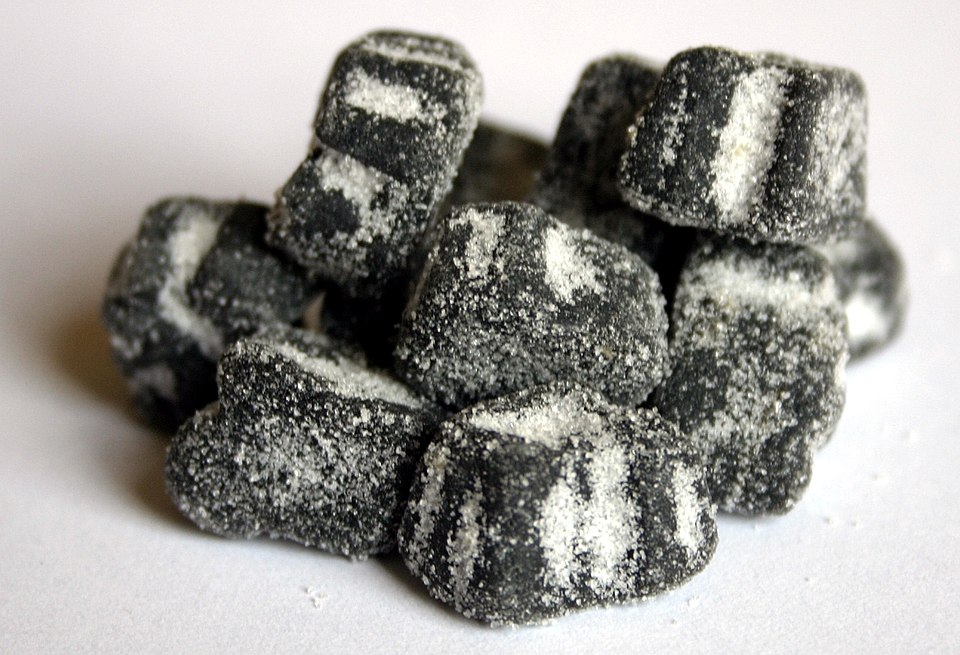
7. Salmiakki (Salty Licorice)
Salmiakki is Finland’s most divisive treat. This strong, salty licorice gets its kick from ammonium chloride. Love it or hate it, you can’t visit Finland without trying it. This intensely salty, black licorice-flavored treat is a polarizing flavor to outsiders but a deep-rooted part of Nordic identity. Finns don’t just enjoy it; they take pride in it, challenging visitors to try it and watching their reactions. You can find Salmiakki flavored vodka, ice cream, and soda, among other treats.
Salmiakki production is low-impact since it’s made from licorice root extract, a plant-based, renewable resource. Unlike chocolate or coffee, it doesn’t rely on resource-heavy farming. Plus, Finnish candy brands are increasingly using sustainable packaging and ethical production methods.
Be aware – this taste is UNIQUE. 😳
Where to Try It
Most convenience and grocery stores will have packages of this special candy.
Panda Factory Store (Jyväskylä) – Order Salmiakki and other Finnish candies.
Candy Experience
Take a tour of all the Fazer factory and see where they produce their candy, chocolate and sweet treats: Fazer Visitor Centre.
Looking for more?

Hernekeitto (Pea Soup)
A hearty and historical Finnish dish, Hernekeitto is a thick soup made from dried peas, traditionally cooked with smoked pork or ham. It dates back to medieval times and is commonly eaten on Thursdays in Finland, a tradition that originated from old Catholic fasting practices. It is often served with mustard and accompanied by Finnish pancakes (Pannukakku) for dessert.
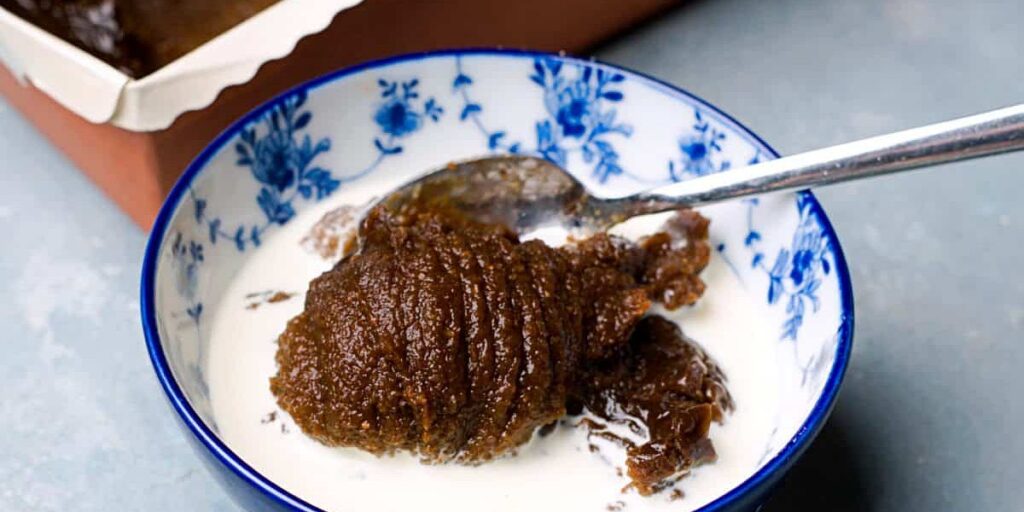
Mämmi (Rye Pudding)
A unique and ancient Easter dessert, Mämmi is a dark, malted rye pudding made from rye flour, water, malt, and molasses. It has a distinctive earthy and slightly sweet flavor. Traditionally, it was prepared in wooden containers and left to ferment slightly before baking. Today, it’s commonly eaten cold with sugar and cream.
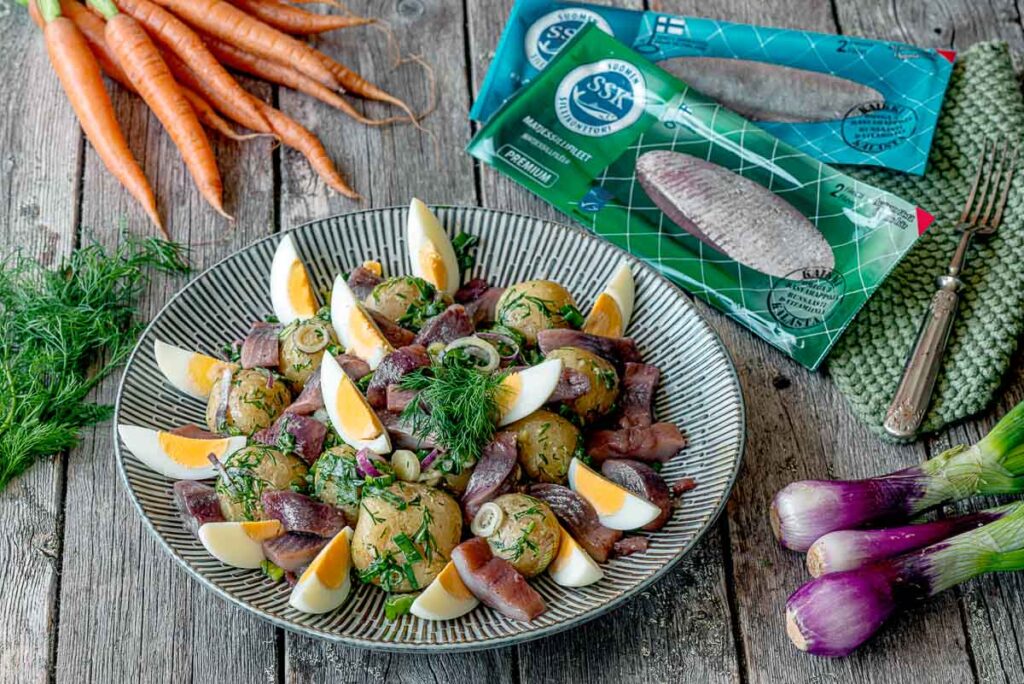
Silli ja Perunat (Pickled Herring with Potatoes)
A classic Finnish summer dish, this meal consists of pickled herring served alongside boiled new potatoes, fresh dill, and sometimes a dollop of sour cream. Herring has been a staple in Finnish cuisine for centuries due to the country’s long fishing tradition, and it’s particularly popular during midsummer celebrations.
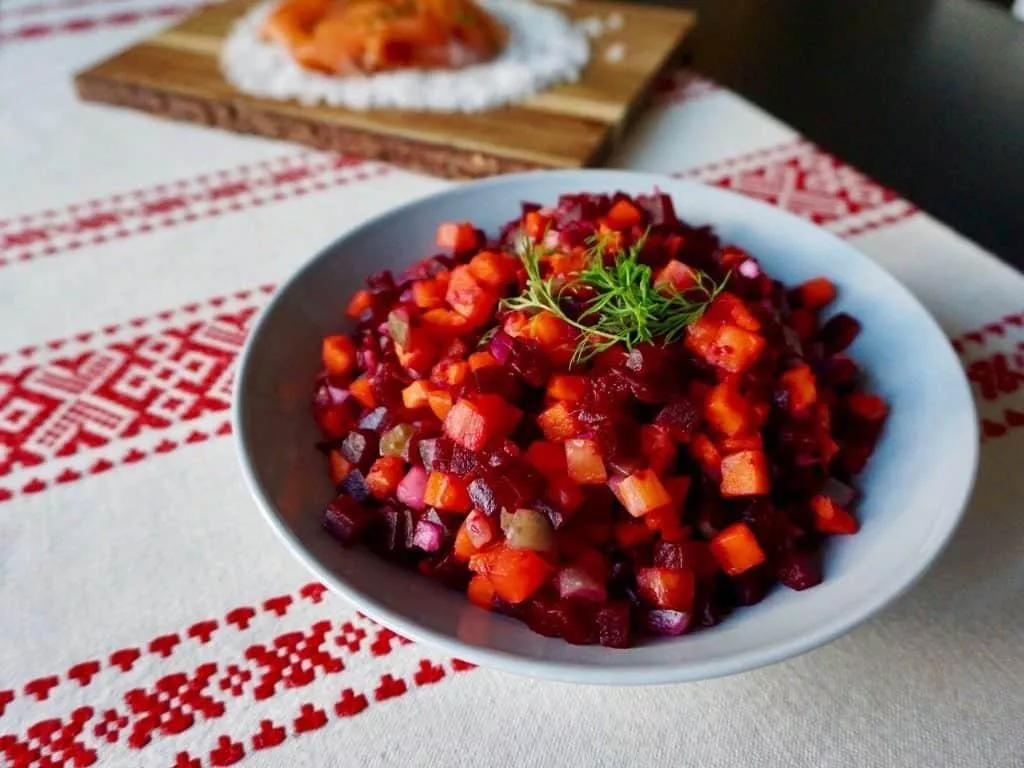
Rosolli (Finnish Beetroot Salad)
A traditional Finnish salad often served during Christmas, Rosolli is made with boiled beets, carrots, potatoes, pickles, and sometimes herring, mixed with a tangy vinegar-based dressing. It has a vibrant pink color and is a staple of Finnish holiday feasts.you to these hidden gems and discover the country’s flavors the responsible way.
We’re traveling and tasting the world at CercaTravel.com!